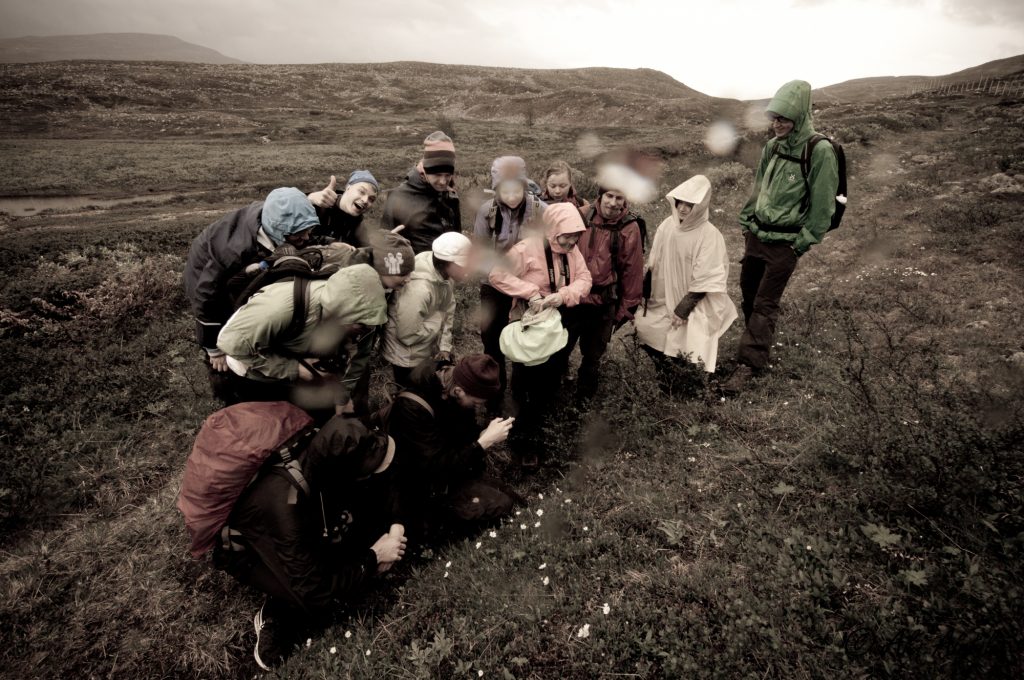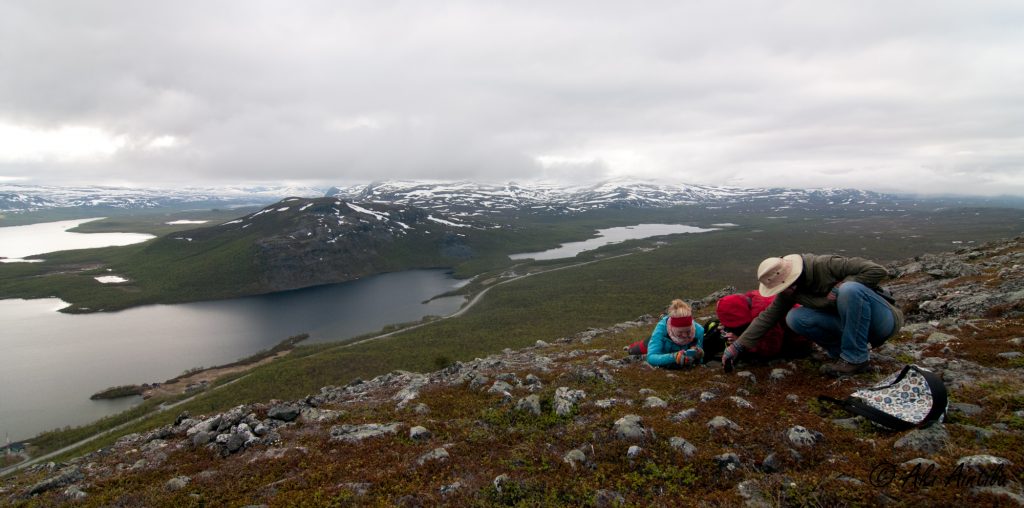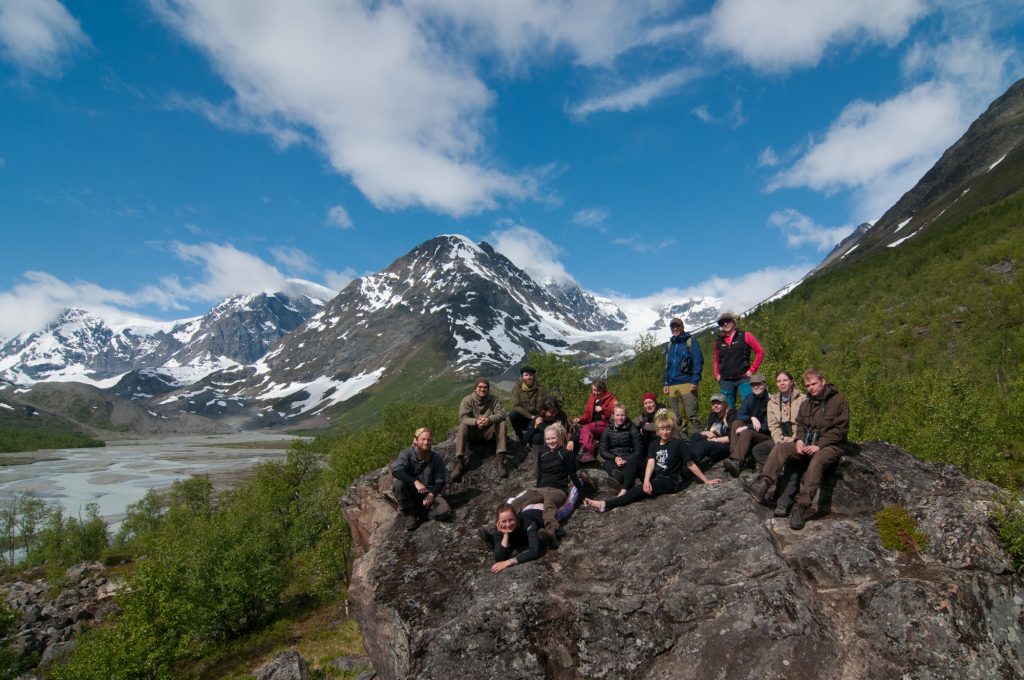Subarctic ecology -course 2017
Situated in the distant north-western corner of Finland, Kilpisjärvi Biological Station is the youngest of biological field stations of University of Helsinki. The field station was established in 1964 and is famous for its unique location, surroundings and research activities based on long-term monitoring schemes, especially on phenology and population dynamics of the key species in arctic ecosystems.
Since 1986 a field course on subarctic ecology has been a steady part of the stations summer program and one of the most traditional field courses for students of Ecology and Evolutionary Biology. (Well, the first course was held in 1980 but was put to halt for two years because of the stations renovation work). For sure the course structure has seen many changes and co-teachers during its +30 year history, but it is still more or less driven by the field station’s manager, Professor Antero Järvinen, and concentrates on the main characteristics of subarctic nature.
Recently the course has been held for up to 15 students, lasting 10 days during the end of June and the first half of July. The combination of excellent surroundings, introductory and advanced lectures, small-scale course studies and variety of field excursions has made this course one of the most anticipated field courses among the students. Every course is unique, since the students themselves are one of the key contents, as every student gives a presentation, chosen from a list of given topics, in a student seminar or during a field excursion.


The starting point for the course is the conditions that organisms face in these arctic latitudes; how the ecological features and limiting factors shift as the importance of biotic factors (e.g. predation, competition between species) decrease and the importance of abiotic factors (average temperature, extreme variations of weather conditions) increase, how organisms have adapted to cope with the extreme conditions and how to exploit the resources available. Furthermore, the theoretical background highlights the role of key species and, naturally, the long-term changes, both in the climatic conditions and species’ population dynamics.

“The field excursion and teaching species identification in the field were the best part of the course.”

But there’s no better way to put theory into practice than sending the students to the field. As a starter, the students collect data for small-scale course works in a small study area nearby the station. The topics have varied, from surveying bird nests to collecting spiders, but the focus is on field methodology, standardizing, sampling and observing the nature from scientific perspective. Step by step, the excursions tend to get broader, from full day hikes to the nearby fells (mountain) or visiting the Norwegian fjords with their own wildlife. The course also visits the bog areas situated 100 km south of Kilpisjärvi, especially the palsa bog areas, introducing the students to another important habitat type of arctic ecosystems.

“Teaching was really inspiring and teachers gave attention to every student. Each teacher on the course is a firm expert of one’s own field.”
Species identification is another important aspect on the course. The purpose is to mainly give general education, as different habitats are characterized by their species compositions. Of course, the background and purpose of species identification skills and mastering species communities were dealt with, since knowing the different bird calls or leaf structures can be essential when working with experimental or plain monitoring studies. But “picking up the cool stuff” and highlighting the specialties of this particular region is also important.

For sure every hue and detail cannot be observed during a single course, but it’s also about exciting and inspiring the students. What a way to familiarize a new generation of students for the function of field stations, biodiversity monitoring and scientific examination than offering hands-on experiences and chances to witness the atmosphere of this one-of-a-kind environment. Field courses like this are also important for recruiting new people for the field stations – and field station based teaching also serves its crucial part on university-level education.
“During the field excursions I realized how unique the nature in this part of Finnish Lapland really is. Many thanks to the organizers!”
Text and photos: Aki Aintila
The author has worked as a co-teacher on the course since 2013. More pictures and stories from this course are available his blog ( in finnish):
http://hulluparoni.blogspot.fi/2017/07/suba-2017-feat-mallan-linjalaskennat_19.html
